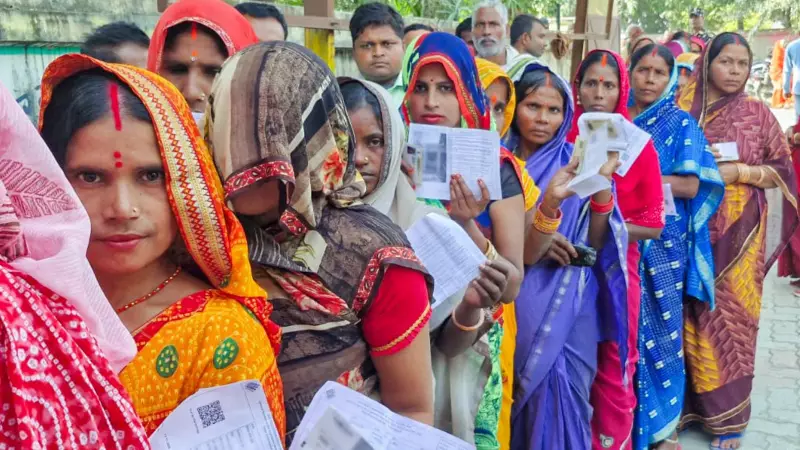
The Real Story Behind NDA's Dramatic Bihar Victory
In a stunning electoral outcome that has reshaped Bihar's political landscape, the JD(U)-BJP alliance secured a massive victory that cannot be explained by simplistic narratives about cash transfers to women voters alone. The results from November 2025 reveal a complex tapestry of voter sentiments that favored incumbent Chief Minister Nitish Kumar for his track record of development work.
Beyond the Rs 10,000 Transfer: A Deeper Look at Women's Empowerment
While political pundits quickly attributed the NDA's success to the election-eve transfer of Rs 10,000 to women under the Mahila Rojgar Yojana, this explanation falls short of capturing the complete picture. The cash transfer, though controversial in its timing, was not the decisive factor many claimed it to be.
This reductionist analysis does disservice to the woman voter, assuming she lacks discernment about the transfer's timing and is easily swayed by last-minute offers. The reality is more nuanced - the Mahila Rojgar Yojana represented the latest in a long series of pro-women policies from the Nitish Kumar government dating back to 2006.
The government's consistent focus on women's welfare included bicycles for schoolgirls, reservations in panchayats and government jobs, the extensive Jeevika network of women's self-help groups, and the prohibition policy despite its implementation challenges. Women voters recognized this sustained commitment rather than responding to a single cash transfer.
Why Nitish Kumar Emerged Stronger Than Ever
Traveling through Bihar during the election campaign revealed a striking contrast between Patna's power corridors and ground reality. While insiders described a leader dependent on advisors and past his prime, voters saw Nitish Kumar as the "vikas purush" (development man) with renewed energy and purpose.
Voters consistently acknowledged that "kaam toh bahut kiye hain" (he has worked a lot), even among his critics. They cited tangible achievements in law and order, infrastructure development including roads, bridges and airports, electricity expansion, and women's empowerment programs.
The election witnessed what can be called Nitish Kumar's emphatic second coming, reminiscent of his 2010 victory when he reaped rewards from his first term's development work. In a campaign filled with extravagant promises from opponents, Nitish stood out as the leader who had actually delivered, even if imperfectly.
The Opposition's Failure to Connect
Tejashwi Yadav, the main challenger from RJD, struggled to overcome his party's legacy and expand his appeal beyond traditional caste equations. Twenty years after the Rabri Devi government fell, Tejashwi has been unable to salvage his father Lalu Prasad's social justice politics from the sticky "jungle raj" narrative.
Voters repeatedly invoked the cautionary phrase "paanch baje ke baad" (after 5 PM), referencing the lawlessness during the Lalu-Rabri regime when people couldn't step out safely after sunset. This memory became a defining theme of the election and worked significantly against Tejashwi.
The RJD leader failed to demonstrate sufficient outreach to non-Yadav castes, with his inner circle lacking caste diversity and his political signaling remaining largely Yadav-centric. This limitation, combined with the Congress party's inability to effectively campaign, created a recipe for the Mahagathbandhan's collapse.
Prashant Kishor's Boomerang Effect
New entrant Prashant Kishor, despite saturating social media spaces with his campaign, ultimately ended up reinforcing Nitish Kumar's position rather than creating a triangular contest. In a state with rich political consciousness, voters saw Kishor as a leader who lacked ground-level grip while talking about starting afresh.
Voters expressed disbelief at promises like Tejashwi's guarantee of one government job per family or Kishor's vow to immediately bring all migrants home. The question "Sambhav hai kya?" (Is it even possible?) captured the skepticism toward these ambitious claims.
Interestingly, while voters didn't trust Kishor's promises, they adopted his framing of issues - particularly palayan (migration) emerged as a central election talking point largely due to his campaign. This might provide an opening for future elections if he persists in Bihar politics.
The Winning Combination
The NDA's victory stemmed from a powerful combination: Nitish Kumar's development credentials, the force-multiplier effect of the Narendra Modi-led BJP, an array of welfare schemes, and a social coalition with a small core vote but widely spread plus vote.
Notably, Hindutva remained a subterranean current in the election, with Bihar's political leadership ensuring the state didn't follow neighboring UP's pattern on this front. The leadership emerging from the JP movement continues to shape Bihar's distinct political character.
As Nitish Kumar begins his new term, having served as chief minister almost continuously since 2005, he faces the burden of addressing new challenges - from urbanization and industrial investment to tourism development. The landslide victory, where voters associated Tejashwi with caste and family, Kishor with bhashan (speeches), and only Nitish with kaam (work), provides strong encouragement for the tasks ahead.





